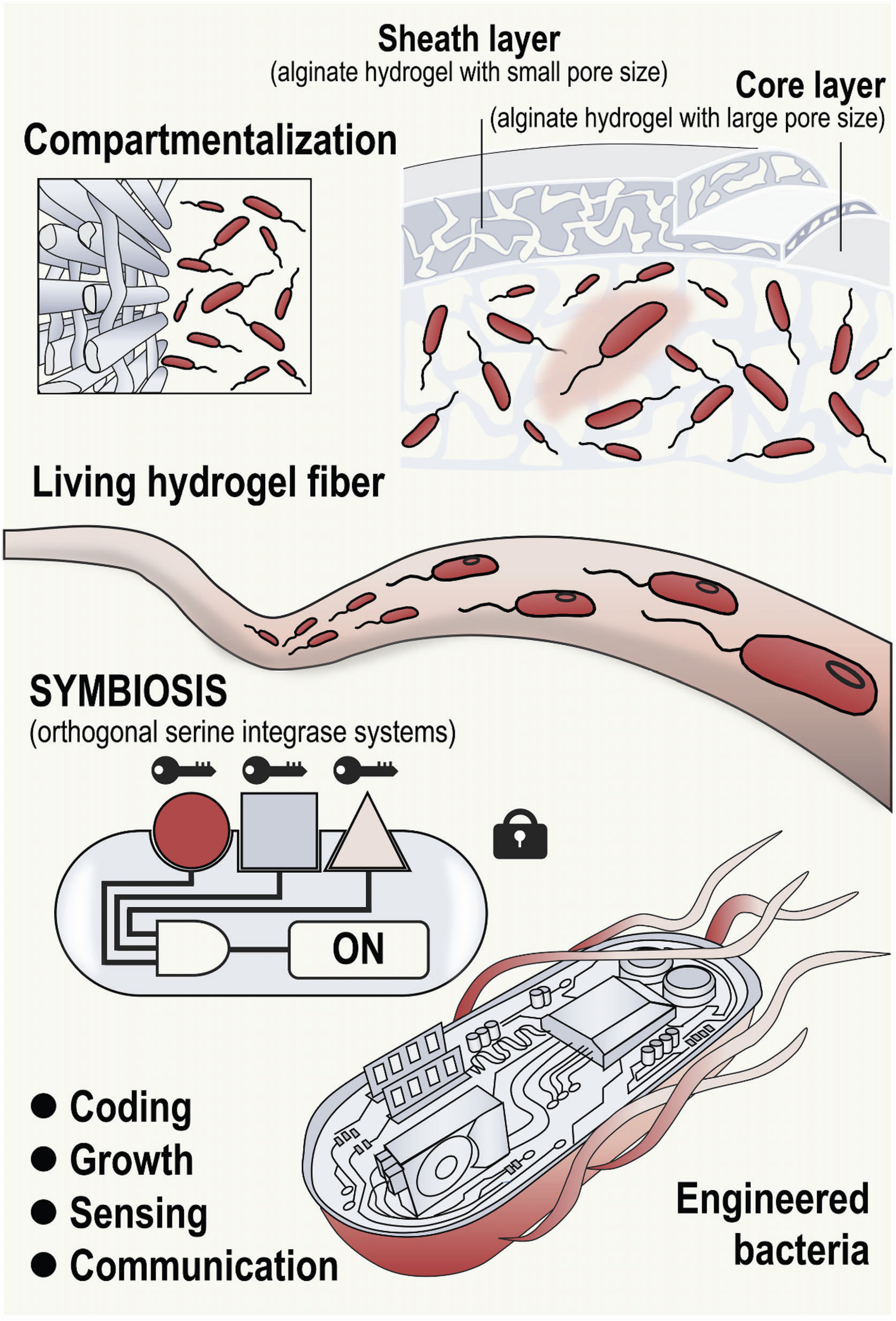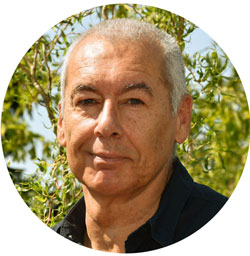| Sep 29, 2023 |
| |
|
(Nanowerk Spotlight) In an era where the quest for sustainable, adaptable, and efficient materials is more urgent than ever, the field of engineered living materials (ELMs) is fast emerging as a promising avenue of research. ELMs, a novel class of biohybrid materials, unite the realms of living cells and non-living components, promising unprecedented dynamic and lifelike properties that traditional materials can’t offer.
|
|
The applications are boundless, ranging from smart fabrics that respond to environmental conditions to innovative biomanufacturing processes that champion sustainability. Despite their vast potential, a critical challenge lies in marrying the mechanical robustness needed for practical use with the inherent delicacy of living systems, a hurdle that has been difficult to overcome until now.
|
|
By drawing from the toolkits of synthetic biology and materials science, researchers can engineer ELMs with dynamic, lifelike properties unattainable through conventional materials alone.
|
|
ELMs are playing a significant role in advancing sustainability, serving as a cornerstone for innovative, eco-friendly advancements. One of the most prominent contributions of ELMs to sustainability is their biodegradable nature. Unlike traditional synthetic materials that persist in the environment for centuries, ELMs can break down naturally, drastically reducing waste and the associated environmental footprint.
|
|
Moreover, their potential in creating self-repairing materials minimizes the need for frequent replacements, further contributing to waste reduction. In the realm of manufacturing, ELMs pave the way for more environmentally benign processes. By utilizing living organisms as part of the material, ELMs can be engineered to grow and self-assemble into desired forms, potentially decreasing the energy and resource inputs traditionally required in manufacturing processes. This biological growth process also often occurs at ambient conditions, further saving energy.
|
|
Additionally, ELMs can be designed for specific eco-friendly applications, such as bioremediation, where engineered living materials can actively participate in the restoration and preservation of the environment by absorbing or breaking down pollutants. These various facets collectively highlight the considerable potential of ELMs in championing a more sustainable and environmentally respectful future.
|
|
A major challenge of ELMs, however, has been balancing the structural stability and mechanical robustness required for practical use with the delicate nature of living systems.
|
|
To address this, scientists have now unveiled a revolutionary method for embedding living bacterial cells within durable, mechanically reinforced hydrogel fibers. This breakthrough, involving the creation of “living hydrogel fibers” (LHFs), harmoniously integrates the tools of synthetic biology with advanced material fabrication techniques.
|
|
The researchers published their findings in Advanced Materials (“Embedding Living Cells with a Mechanically Reinforced and Functionally Programmable Hydrogel Fiber Platform”).
|
 |
| The design of engineered bacteria embedded with mechanically reinforced and functionally programmable hydrogel fiber platform. Hydrogel sheath–core fibers with structural and functional designability were produced using microfluidic spinning. Engineered bacteria with genetic circuits were grown within the pores of the hydrogel fiber core layer, enabling the fibers to exhibit coloration through the expression of chromoproteins and fluorescent proteins, and to sense water pollutants by expressing fluorescent protein. When combined with bacteria, the hydrogel fiber develops into a living hydrogel fiber (LHF) platform with optimal structure–property–function. (Reprinted with permission by Wiley-VCH Verlag)
|
|
The inner hydrogel core contains a loose polymer network with large pores facilitating bacterial migration and proliferation. During the gentle room temperature spinning process, the rod-shaped bacteria align axially within the core, aiding uniform fiber formation. The researchers also applied a mechanical training technique, based on repetitive tensile loading cycles, to significantly reinforce the LHF’s mechanical strength and toughness while maintaining its soft, flexible nature.
|
|
Leveraging synthetic biology techniques, the team then engineered the encapsulated E. coli cells with customizable genetic circuits to expand LHF functionality. In one demonstration, tailored plasmids enabled precise expression of different chromoprotein pigments, allowing spun fibers to exhibit a wide gamut of persistent colors, including gradient shifts along the length. Weaving the robust colored LHFs into textile architectures created anti-counterfeiting tags.
|
|
The dense, microporous outer hydrogel layer functions analogously to a permeable cell membrane, allowing diffusion of nutrients and wastes while confining the embedded bacteria. This design element enhances bacterial growth and simultaneously prevents biocontainment issues related to gene-modified organisms escaping into the environment.
|
|
In another application, researchers reconstructed the bacteria to function as whole-cell biosensors that fluoresce in response to water pollutants. The sensitivity and selectivity remained intact after bacterial encapsulation within the fibers. This allowed fabricating LHF-based devices that visually signal contamination levels in water samples. Together, the integrated fiber platform’s mechanical robustness, design versatility, and genetically programmable capabilities establish a versatile toolkit for developing future ELMs.
|
|
By emulating natural biological principles, ELMs can potentially transform material production into more sustainable, resource-efficient practices. For instance, self-growing bacterial cellulose materials avoid energy-intensive industrial processes. LHFs expand the possibilities by offering better control over ELM structure and properties using current manufacturing techniques, while maintaining living attributes. Looking forward, researchers envision ELMs may open new horizons in smart textiles, bioremediation, regenerative medicine, and beyond. However, fully unlocking their potential will require interdisciplinary collaboration crossing traditional boundaries between the life sciences and engineering disciplines.
|
|
This pioneering work, marrying robust mechanical design with living attributes, paves the way for the expansive development and application of ELMs, offering a tantalizing glimpse into the future of material science.
|

By
Michael
Berger
– Michael is author of three books by the Royal Society of Chemistry:
Nano-Society: Pushing the Boundaries of Technology,
Nanotechnology: The Future is Tiny, and
Nanoengineering: The Skills and Tools Making Technology Invisible
Copyright ©
Nanowerk LLC
|
|
|
- SEO Powered Content & PR Distribution. Get Amplified Today.
- PlatoData.Network Vertical Generative Ai. Empower Yourself. Access Here.
- PlatoAiStream. Web3 Intelligence. Knowledge Amplified. Access Here.
- PlatoESG. Carbon, CleanTech, Energy, Environment, Solar, Waste Management. Access Here.
- PlatoHealth. Biotech and Clinical Trials Intelligence. Access Here.
- Source: https://www.nanowerk.com/spotlight/spotid=63742.php





